- In the Garden
- >
- Collections
- >
- Camellia Collection
As Erica noted briefly below, the camellia was named by Karl Linnaeus, Swedish botanist and taxonomist, in honor of George Joseph Kamel who also described the flora of the island of Luzon in the Philippines. Camellias were grown in the Yunnan province in China since 3,000 BC with actual tea drinking begun around 1500 BC. Three different taxonomic authorities place the number of valid camellia species between 80 and 280. A large majority of the species are native to China.
Because they were from far-away climes and considered exotic, camellias were grown at first in 'stove houses', which were too hot and humid, and many of these first plants died. The truth is, most camellias are perfectly happy in very cool conditions and are rarely killed by cold.
Camellia oleifera: The tea oil, extracted from the fruit, is similar to olive oil, as it makes very high quality cooking oil. It also provides many other manufacturing possibilities. Tea oil can be used for the manufacture of soap, lubricants, margarine, paint, and hair oil. The oil is very fine and does not become viscous, so it is used in watchmaking; in fact, this tea oil is often called 'watchmakers' oil'.
The shape of the camellia was a great source of inspiration to the fashion designer Coco Chanel and continues to be used in her designs today.
Most of the camellias in our garden are found near the Korean Garden, but in 2014 a number of Camellia sasanqua were planted at the south end of the Winter Walk in order to hide an electrical transformer. They will be sheared into a hedge, as the Japanese do.
Because they were from far-away climes and considered exotic, camellias were grown at first in 'stove houses', which were too hot and humid, and many of these first plants died. The truth is, most camellias are perfectly happy in very cool conditions and are rarely killed by cold.
Camellia oleifera: The tea oil, extracted from the fruit, is similar to olive oil, as it makes very high quality cooking oil. It also provides many other manufacturing possibilities. Tea oil can be used for the manufacture of soap, lubricants, margarine, paint, and hair oil. The oil is very fine and does not become viscous, so it is used in watchmaking; in fact, this tea oil is often called 'watchmakers' oil'.
The shape of the camellia was a great source of inspiration to the fashion designer Coco Chanel and continues to be used in her designs today.
Most of the camellias in our garden are found near the Korean Garden, but in 2014 a number of Camellia sasanqua were planted at the south end of the Winter Walk in order to hide an electrical transformer. They will be sheared into a hedge, as the Japanese do.
Erica's Original Notes
These plants are named after the Moravian Jesuit priest Georg Joseph Kamel.
As you can imagine, it was not easy to bring plants back alive on the long, hot sea journey from the Orient, even with resting stations along the way to help revive them. This gave rise to the botanical gardens in Ceylon, Calcutta and the Cape (Kirstenbosch). However, by 1739, the beautiful, fast clipper ships had been built, and, due to their extra speed (two to three months for the journey), they were able to bring plants such as the camellia back alive to Europe. At first, camellias were thought to be tender and were only grown in greenhouses, but presumably by accident they were found to be hardy.
There is a tremendous variety of flowers from single to extra double.
Camellias belong to the same family as tea (Theaceae) whose dried leaves keep us on the go, or, conversely, give us an excuse to sit down!
Our collection was a donation.
Buds may be damaged by winter cold, and plants should not be grown facing the rising sun which could damage frost-bitten buds.
Dead flowers usually stay on the bush unfortunately, but with Camellia `Donation' and C. `Brigadoon' they do not, which is a great asset.
Harvesting tea: Camellia sinensis grows from Assam to China and is covered with black nets to render the leaves more tender. Over 300 years ago the Dutch imported the first tea to Britain, thereby starting the craze for tea. A dish of tea was so called because cups at that time had no handles. The British imported cuttings of the plant to India to start the tea plantations. The first cargo to arrive in our city's newly established port in 1886 was a shipment of Chinese tea.
Varieties:
a) Camellia japonica, the common camellia, was introduced into Europe in 1730 and has been much used by commercial hybridists. C. japonica 'Lady Mackinnon' has white blotches on its red petals.
b) C. reticulata, was brought back from Western China in 1924 by the plant explorer George Forrest; it is hardy in sheltered gardens.
c) C. saluensis is similar to C. reticulata, but with smaller leaves, the flowers being borne in profusion.
d) C. sasanqua has small, fragrant, usually white flowers, needing wall protection; it is the parent of many crosses. It arrived from Japan in 1869.
e) C. x williamsii: (C. japonica x saluensis) is one of the most valuable hybrid shrubs and the best camellia for general planting as it is free flowering for a long period. Raised by J.C. Williams at Caerhays Castle, Cornwall, about 1925 (the original plants are still alive there!)
For more information, click on team notes.
Useful Links:
These plants are named after the Moravian Jesuit priest Georg Joseph Kamel.
As you can imagine, it was not easy to bring plants back alive on the long, hot sea journey from the Orient, even with resting stations along the way to help revive them. This gave rise to the botanical gardens in Ceylon, Calcutta and the Cape (Kirstenbosch). However, by 1739, the beautiful, fast clipper ships had been built, and, due to their extra speed (two to three months for the journey), they were able to bring plants such as the camellia back alive to Europe. At first, camellias were thought to be tender and were only grown in greenhouses, but presumably by accident they were found to be hardy.
There is a tremendous variety of flowers from single to extra double.
Camellias belong to the same family as tea (Theaceae) whose dried leaves keep us on the go, or, conversely, give us an excuse to sit down!
Our collection was a donation.
Buds may be damaged by winter cold, and plants should not be grown facing the rising sun which could damage frost-bitten buds.
Dead flowers usually stay on the bush unfortunately, but with Camellia `Donation' and C. `Brigadoon' they do not, which is a great asset.
Harvesting tea: Camellia sinensis grows from Assam to China and is covered with black nets to render the leaves more tender. Over 300 years ago the Dutch imported the first tea to Britain, thereby starting the craze for tea. A dish of tea was so called because cups at that time had no handles. The British imported cuttings of the plant to India to start the tea plantations. The first cargo to arrive in our city's newly established port in 1886 was a shipment of Chinese tea.
Varieties:
a) Camellia japonica, the common camellia, was introduced into Europe in 1730 and has been much used by commercial hybridists. C. japonica 'Lady Mackinnon' has white blotches on its red petals.
b) C. reticulata, was brought back from Western China in 1924 by the plant explorer George Forrest; it is hardy in sheltered gardens.
c) C. saluensis is similar to C. reticulata, but with smaller leaves, the flowers being borne in profusion.
d) C. sasanqua has small, fragrant, usually white flowers, needing wall protection; it is the parent of many crosses. It arrived from Japan in 1869.
e) C. x williamsii: (C. japonica x saluensis) is one of the most valuable hybrid shrubs and the best camellia for general planting as it is free flowering for a long period. Raised by J.C. Williams at Caerhays Castle, Cornwall, about 1925 (the original plants are still alive there!)
For more information, click on team notes.
Useful Links:
Camellia Collection
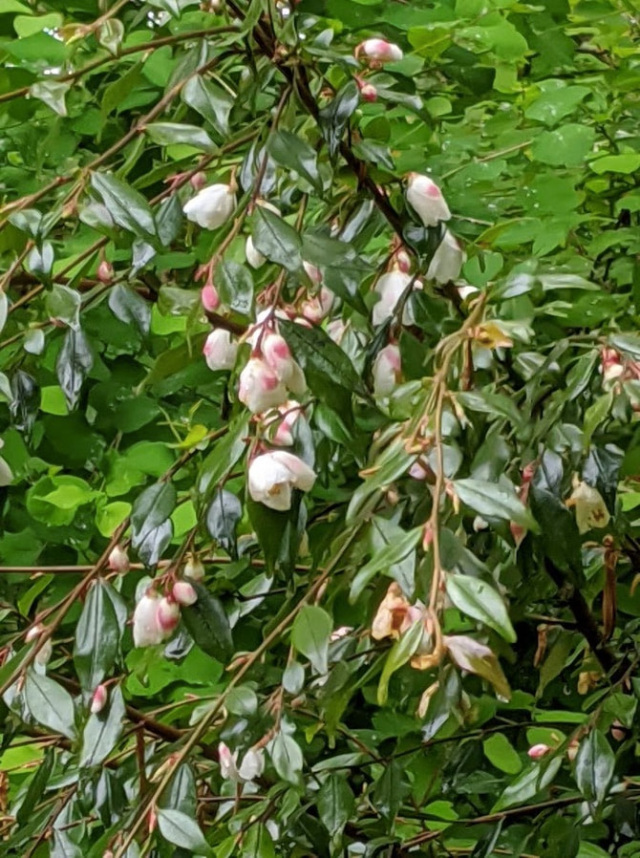
Camellia 'Elina Cascade'
CA$0.00
CA$0.00
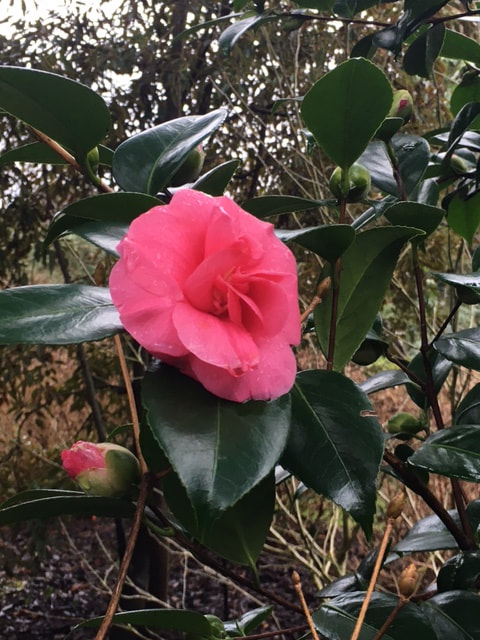
Camellia japonica 'Gloire de Nantes'
CA$0.00
CA$0.00
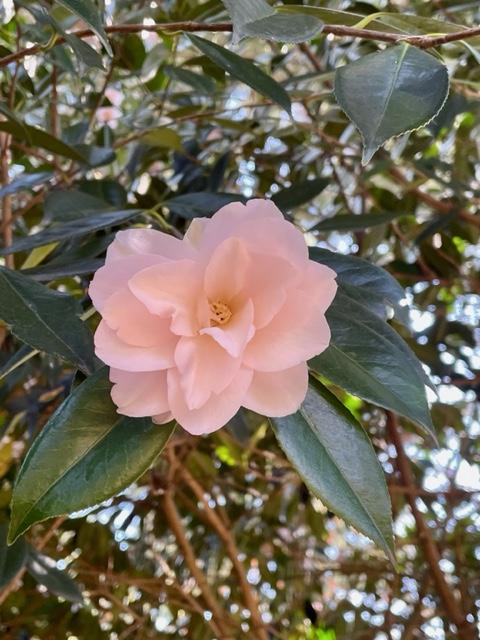
Camellia japonica ‘Hagoromo’
CA$0.00
CA$0.00
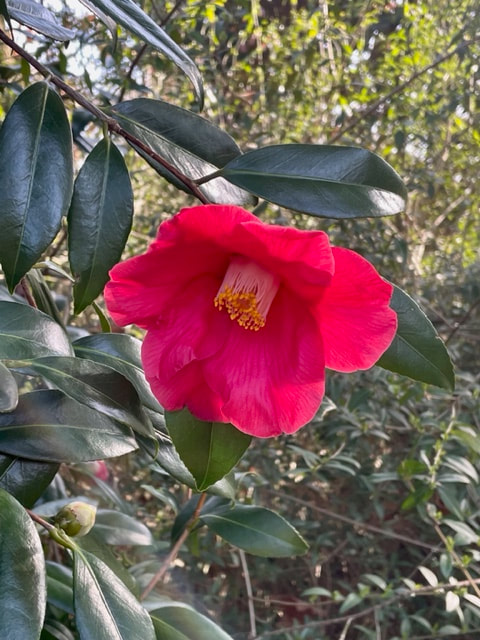
Camellia japonica 'Jupiter'
CA$0.00
CA$0.00
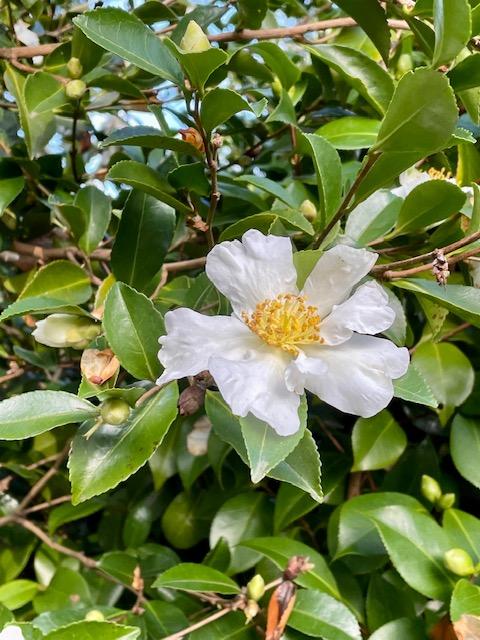
Camellia sasanqua ‘Setsugekka'
CA$0.00
CA$0.00
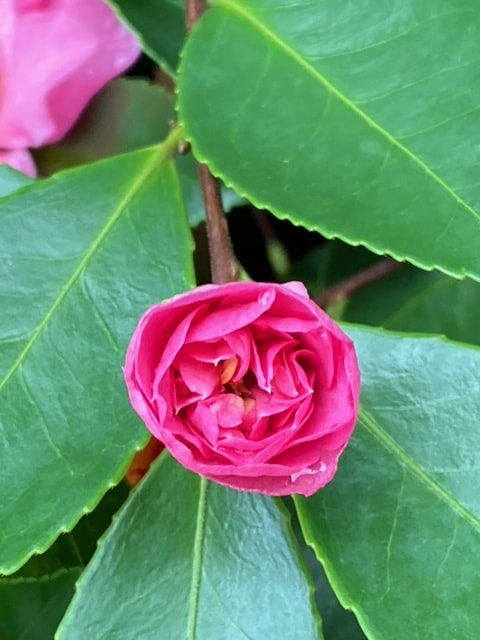
Camellia sasanqua 'Shôwa-no-sakae'
CA$0.00
CA$0.00